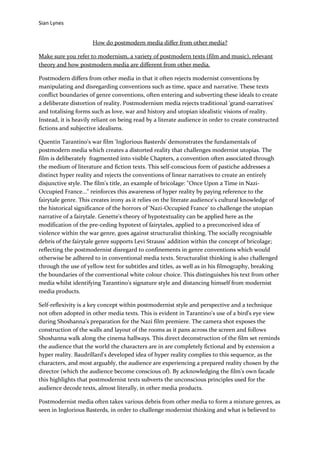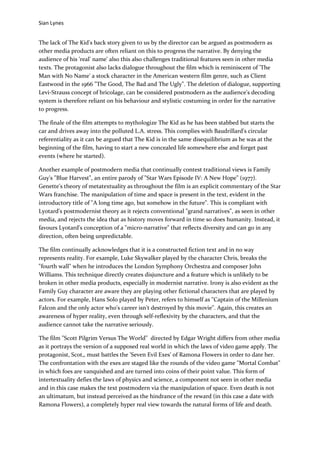Postmodern media differs from other media in that it often rejects conventions like linear narratives and time/space in favor of manipulated and fragmented forms. Postmodern works reference and subvert other genres/texts, creating deliberate distortions of reality rather than utopian visions. They also rely on audience familiarity to generate constructed fictions. The films Inglorious Basterds and Drive are given as examples, using techniques like pastiche, references to other works, challenging narrative structures, and emphasizing their own artificiality.



